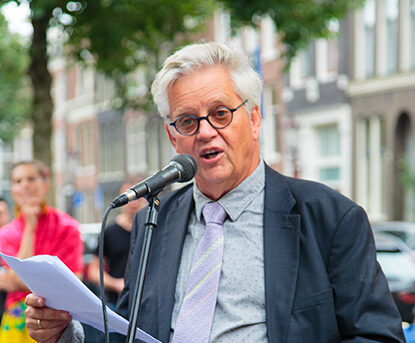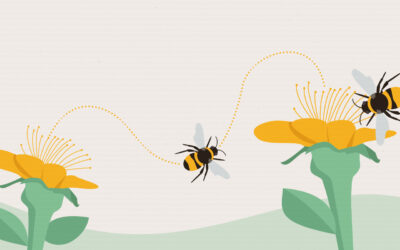In his capacity as the Scientific Director of the Botanical Garden at Delft University of Technology, Bob Ursem delivered a compelling address during the unveiling ceremony of the BeeTotem at Palmgracht in the heart of Amsterdam. His message was incisive and impactful, and I’d like to share an excerpt from it:
‘Ladies and gentlemen, What kind of world will we end up in if bees and bumblebees can no longer fly? A horrifying prospect when biodiversity declines so dramatically that there will literally be a void around us.
I have been in China, in Wuhan, there could experience that no more birds, insects, grasshoppers could be seen in the sky, the whole landscape had degenerated into a completely animal-less, biodiversity-less desert. A spectre I think… Fortunately still unthinkable in the Netherlands now, but we are fast moving towards that, perhaps unintentionally.
You can really do something about this. And I am personally addressing everyone on this right now.
The wonderful project of BeeTotems actually mitigates this problem.
With Beetotems for RefuBees, you will soon see beautiful examples of a bee food totem and bee hotel, plants are planted in a coastal work that all provide lots of nectar and pollen for wild bees and bumblebees.
These are plants that are specially selected and all also provide large amounts of nectar and pollen that exactly suit all specific groups of bees and bumblebees. Many wild bees and bumblebees are specialised by species and thus linked to certain appropriate flower species. There are therefore also very different types of flower plants on display in the diverse BeeTotems, so that a wide range also provides enough and the right amount of food for everyone.
You may be thinking. I also have a garden or balcony full of flower plants. So why do I even need a BeeTotem?
The ornamental plants in your garden or on your balcony usually come from a garden centre and these are selected and grown for colourful large flowers, but do not provide much, if any, nectar and are thus not food-providing plants for bees and bumblebees.
There are only a few plant breeders in the Netherlands who specialise in nectar- and pollen-producing plants for flying insects. Within this project this aspect is included in the Totems working with nurseries such as Kruydthoeck and the Hessenhof.
If we start placing BeeTotems everywhere in the city, we will help improve basic bee and bumblebee biodiversity, actually it applies to more and all flying insects. You can further add to the food chain. There will then be more insect-eating birds and bats and you will therefore have less nuisance from insects that live off blood, such as mosquitoes. In short, a much better environment for the animals and your well-being in your immediate environment.’
Image: Rodolfo Vejar


